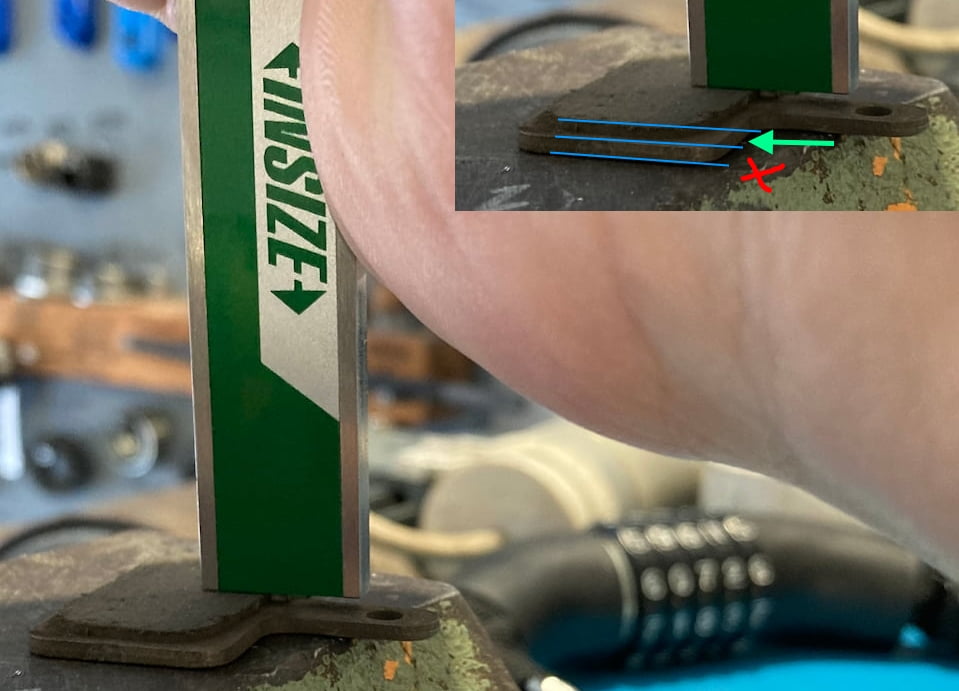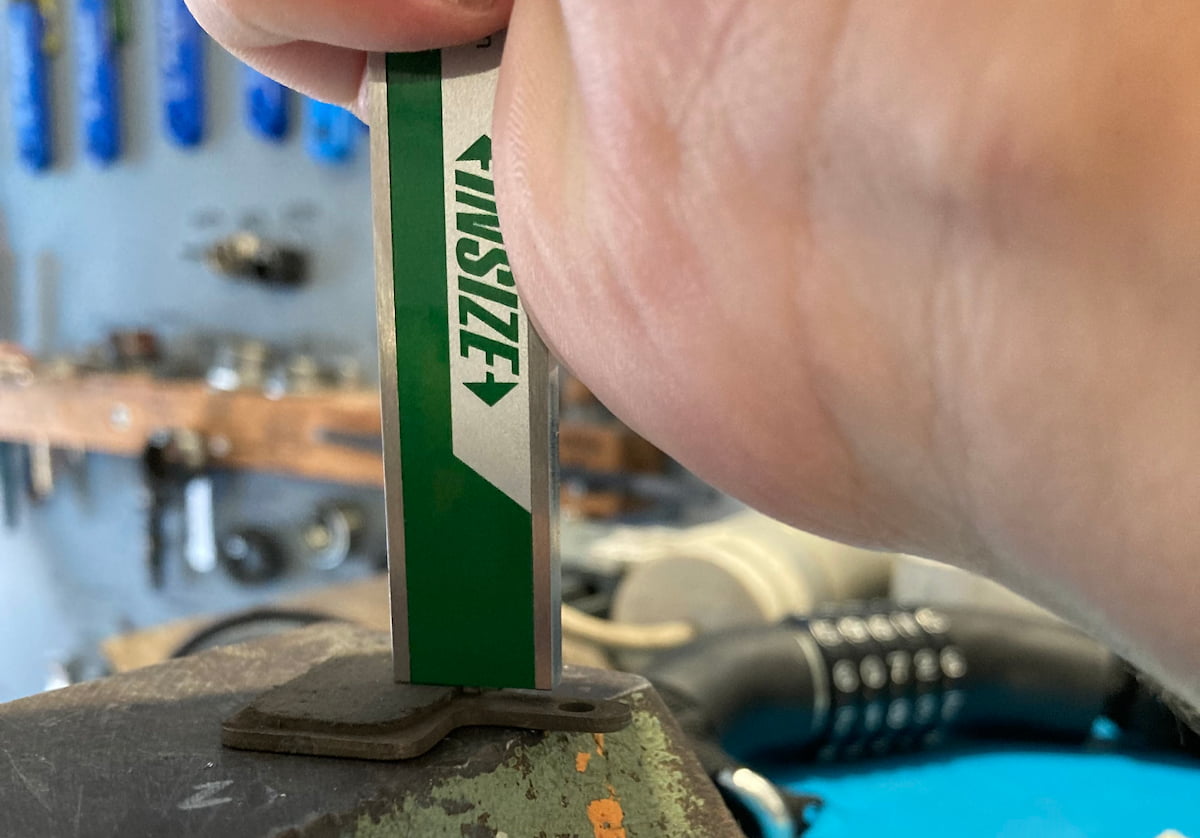Bicycle disc brake pads get worn when you brake, and after a while you should replace them. Of course, replacing them too soon is a waste of money (and material). So when should you replace them?
Separate article: When to replace the brake discs (“rotors”)?
Table Of Contents (T.O.C.):
1. Short recommendation
Below, I’ve listed manufacturer recommendations. That is the safe bet and the only thing I can “officially” recommend (below that I’ve also explain how you can measure pad thickness).
Unofficially (based on my education, theoretical knowledge, and practical experience):
You should replace pads when they are worn under 1 mm of thickness.
The absolute minimum is 0.5 mm, below which you are running the risk of increased brake disc (“rotor“) wear, and poor or uneven brake performance.
Keep in mind that the measurement should only include the pad thickness, not the thickness of the steel backing plate that the pads are glued onto.
2. Manufacturer recommendations
- Shimano: Replace pads when they get below 1 mm, and not let them get below 0.5 mm.
- SRAM and Avid: at about 1 mm of thickness.
- Magura: when they reach 2 mm of thickness.
Magura brake discs (“rotors”) are thicker than the others – at 2 mm thickness, as opposed to 1.8 mm of other manufacturers. - Hope: when they get below 1.5 mm of thickness.
- TRP: once they’re worn under 1.5 mm, and definitely once they reach 1 mm of thickness.
3. How to measure pad thickness
To repeat: you only measure the thickness of the pad material, not the thickness of the steel backing plate.
For measuring it is best to use calipers.
How to use calipers – video tutorial
Here is what and how to measure:

Make sure to keep the calipers parallel. Lean the caliper’s body against the pad material, and use the “pointy” bottom end to reach the steel backing plate. In case of uneven pad wear, measure at its thinnest side.
4. Extra tips
- Take a 1 mm thick pad (or of whichever thickness your brake manufacturer recommends replacing).
- Save it for reference and try to memorize what that pad thickness looks like visually.
- Then, eyeball the brake pads on your bike regularly to see when they might need to be taken out for measuring or replacing if worn past the safe thicnkess.
Don’t wait for the steel pad backing to start screaming over your discs in order to replace the pads.
If you have any questions, additions or corrections, use the comment field below (it is auto-locked 30 days after the article’s been published) or, even better, the BikeGremlin forum.
Help BikeGremlin
stay online & independent
This website is educational, free, objective, and not commercial
(sponsors don’t enjoy paying if you mention all the product downsides that you notice 🙂 ).
How much does a WordPress website cost?
If you find this site to be good and helpful,
and if $5 per month is what you can afford to set aside,
please consider supporting my work with a Patreon donation:

